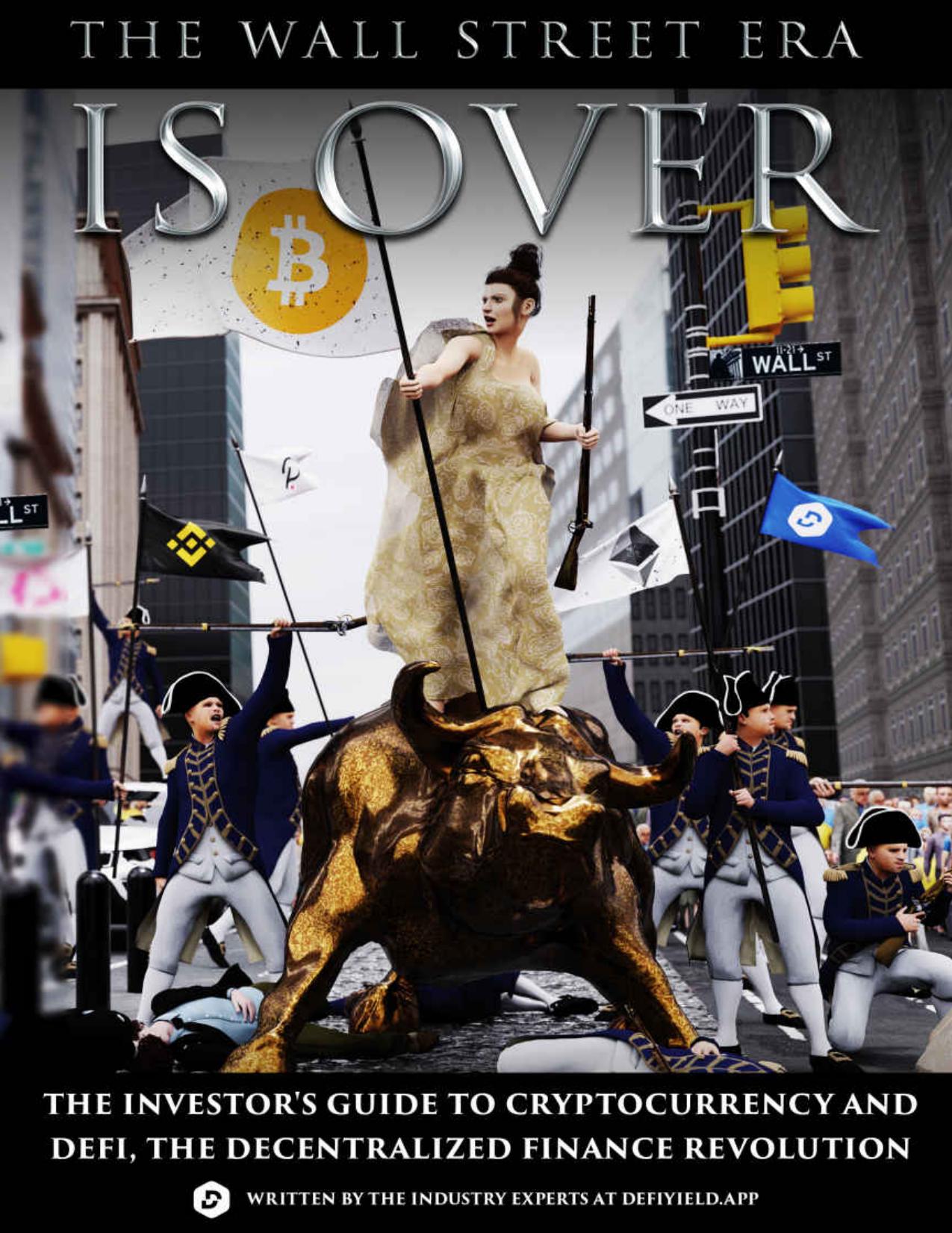The Wall Street Era is Over: The Investor's Guide to Cryptocurrency and DeFi, the Decentralized Finance Revolution by DEFIYIELD App

Author:DEFIYIELD App [App, DEFIYIELD]
Language: eng
Format: epub, pdf
Publisher: DEFIYIELD App
Published: 2021-05-12T07:00:00+00:00
Yield from providing liquidity
Providing liquidity to a project is a slightly more complex use case to understand than lending and borrowing, but it does have some similarities and should be fairly easy to grasp once you understand players involved.
Essentially, projects like Decentralised Exchanges (DEXes) need to be able to access enough liquidity in a variety of assets for users to be able to trade and exchange these assets. As decentralized projects, they probably wouldnât want to hold these assets themselves and, even if they did, they probably couldnât hold vast quantities of assets required to provide these liquidity pools.
Therefore, they borrow a concept from the traditional finance world and tweak it to the needs of the decentralized one. A market maker in a traditional finance market does as the name suggests, they âmakeâ a âmarketâ for a pair of assets (for example, USDT and ETH) by holding enough of these assets and always being available to trade them when a user wants to.
In the decentralized finance world, these market makers become automated market makers (AMMs), which are large pools of asset pairs orchestrated and adjusted by smart contracts to reflect a mid-market price for the asset pair. This automated price discovery process is essentially brought about by arbitrageurs identifying a discrepancy between the price offered by a pool and the price offered by another exchange, and then buying or selling the assets in the liquidity pool to take advantage of this opportunity.
However, this relatively technical process doesnât need to be understood in depth to understand liquidity provision within Yield Farming. More important is the question of where these automated pools of liquidity come from?
This is where the individual asset holders, such as Yield farmers, come in. Projects incentivises individuals to deposit and lock up their assets into liquidity pools for the specific purpose of providing liquidity. In return, the depositors receive a portion of fees that are paid out to this liquidity pool by traders wanting to buy or sell the assets in them.
Download
The Wall Street Era is Over: The Investor's Guide to Cryptocurrency and DeFi, the Decentralized Finance Revolution by DEFIYIELD App.pdf
This site does not store any files on its server. We only index and link to content provided by other sites. Please contact the content providers to delete copyright contents if any and email us, we'll remove relevant links or contents immediately.
| Analysis & Strategy | Bonds |
| Commodities | Derivatives |
| Futures | Introduction |
| Mutual Funds | Online Trading |
| Options | Portfolio Management |
| Real Estate | Stocks |
Rich Dad Poor Dad by Robert T. Kiyosaki(6399)
Pioneering Portfolio Management by David F. Swensen(6226)
How To Win Friends and Influence People by Dale Carnegie(4441)
The Money Culture by Michael Lewis(4074)
The Dhandho Investor by Mohnish Pabrai(3698)
The Wisdom of Finance by Mihir Desai(3650)
Liar's Poker by Michael Lewis(3367)
Fooled by Randomness: The Hidden Role of Chance in Life and in the Markets by Nassim Nicholas Taleb(3043)
The ONE Thing by Gary Keller(3007)
The Intelligent Investor by Benjamin Graham Jason Zweig(2995)
Mastering Bitcoin: Programming the Open Blockchain by Andreas M. Antonopoulos(2980)
How to Day Trade for a Living: Tools, Tactics, Money Management, Discipline and Trading Psychology by Andrew Aziz(2909)
Rich Dad Poor Dad: What The Rich Teach Their Kids About Money - That The Poor And Middle Class Do Not! by Robert T. Kiyosaki(2907)
Investing For Dummies by Eric Tyson(2893)
How to Win Friends and Influence People by Dale Carnegie(2860)
Market Wizards by Jack D. Schwager(2643)
Zero Hour by Harry S. Dent Jr. & Andrew Pancholi(2614)
How to Pay Zero Taxes, 2018 by Jeff A. Schnepper(2591)
The Psychology of Money by Morgan Housel(2591)
